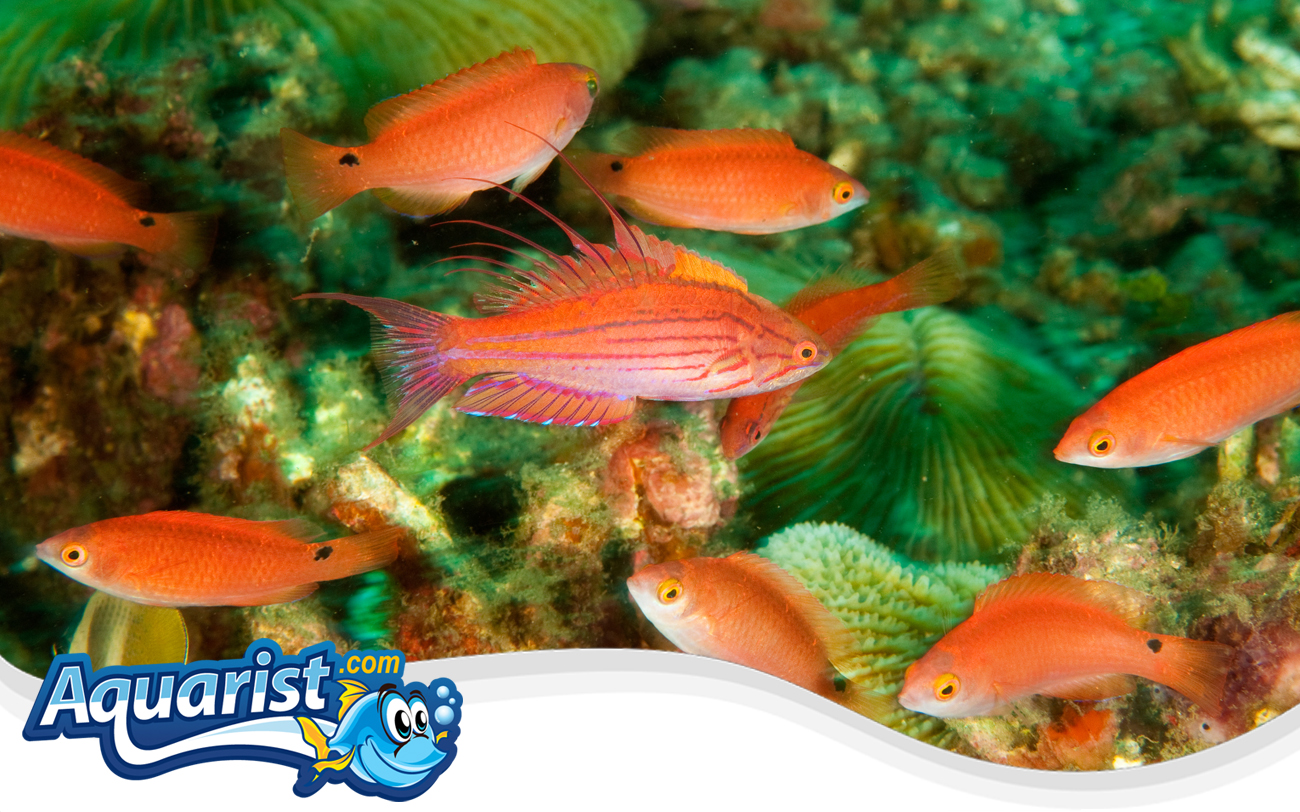Overview
- Native to the Western Pacific Ocean.
- Known for the elongated filaments on the dorsal fin of males, used in their flashing displays.
- Small and slender-bodied, with vibrant coloration that intensifies during courtship.
- Peaceful and active, preferring reef environments with plenty of hiding spaces.
Feeding
- Carnivorous, feeding on small zooplankton and other tiny invertebrates.
- Accepts small live or frozen foods such as copepods, brine shrimp, and finely chopped seafood.
- Requires frequent small feedings throughout the day to support their high activity level.
- A varied diet helps maintain their health and vibrant colors.
Habitat
- Inhabits reef slopes and areas with mixed coral and rubble.
- Prefers areas with good water circulation and plenty of hiding spots among the rocks.
- Often found in small groups, with males displaying to females.
- Requires a well-established aquarium with stable parameters and ample live rock.
Fish Care
- Optimal water temperature: 75-82°F (24-28°C).
- pH level: 8.1-8.4, specific gravity: 1.023-1.026.
- Maintaining stable water conditions with regular water changes and efficient filtration is essential.
- Providing a stress-free environment promotes their overall health and well-being.
Compatibility
- Peaceful and reef-safe, making them suitable for most community reef aquariums.
- Best kept with other peaceful species of similar size and temperament.
- Avoid housing with aggressive or boisterous fish that may intimidate them.
- Can be kept in small groups with a single male and several females to observe their natural behaviors.
Aquarium Behavior
- Males exhibit elaborate “flashing” displays, extending their dorsal fin filaments and intensifying their colors to attract females.
- Active swimmers that spend their time exploring the middle and upper levels of the aquarium.
- May seek shelter among the rocks when feeling threatened or at night.
- Adds a vibrant and dynamic presence to reef aquariums with their lively behavior and striking displays.


